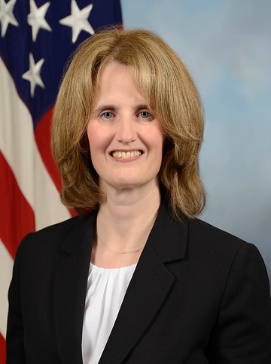
The Defense Advanced Research Projects Agency (DARPA) is a research and development agency of the United States Department of Defense responsible for the development of emerging technologies for use by the military.

The National Security Agency (NSA) is an intelligence agency of the United States Department of Defense, under the authority of the Director of National Intelligence (DNI). The NSA is responsible for global monitoring, collection, and processing of information and data for foreign intelligence and counterintelligence purposes, specializing in a discipline known as signals intelligence (SIGINT). The NSA is also tasked with the protection of U.S. communications networks and information systems. The NSA relies on a variety of measures to accomplish its mission, the majority of which are clandestine. The NSA has roughly 32,000 employees.

Surveillance is the monitoring of behavior, many activities, or information for the purpose of information gathering, influencing, managing, or directing. This can include observation from a distance by means of electronic equipment, such as closed-circuit television (CCTV), or interception of electronically transmitted information like Internet traffic. It can also include simple technical methods, such as human intelligence gathering and postal interception.

The Information Awareness Office (IAO) was established by the United States Defense Advanced Research Projects Agency (DARPA) in January 2002 to bring together several DARPA projects focused on applying surveillance and information technology to track and monitor terrorists and other asymmetric threats to U.S. national security by achieving "Total Information Awareness" (TIA).

Total Information Awareness (TIA) was a mass detection program by the United States Information Awareness Office. It operated under this title from February to May 2003 before being renamed Terrorism Information Awareness.
Homeland Security Advanced Research Projects Agency (HSARPA) is a part of the Science and Technology Directorate at the United States Department of Homeland Security. Much like DARPA in the Department of Defense, HSARPA is tasked with advanced projects to advance the technology needed to protect the US. Some of the chief beneficiaries of HSARPA are the Customs and Border Protection, and the Office of Intelligence and Analysis.

The Intelligence Advanced Research Projects Activity (IARPA) is an organization within the Office of the Director of National Intelligence responsible for leading research to overcome difficult challenges relevant to the United States Intelligence Community. IARPA characterizes its mission as follows: "To envision and lead high-risk, high-payoff research that delivers innovative technology for future overwhelming intelligence advantage."

Lisa J. Porter is an American scientist and founding Director of the Intelligence Advanced Research Projects Activity. Prior to this position, she was the Associate Administrator for Aeronautics Research at NASA and a senior scientist in the Advanced Technology Office of the Defense Advanced Research Projects Agency.

The Utah Data Center (UDC), also known as the Intelligence Community Comprehensive National Cybersecurity Initiative Data Center, is a data storage facility for the United States Intelligence Community that is designed to store data estimated to be on the order of exabytes or larger. Its purpose is to support the Comprehensive National Cybersecurity Initiative (CNCI), though its precise mission is classified. The National Security Agency (NSA) leads operations at the facility as the executive agent for the Director of National Intelligence. It is located at Camp Williams near Bluffdale, Utah, between Utah Lake and Great Salt Lake and was completed in May 2014 at a cost of $1.5 billion.
Steven Nixon is founder and president of Steven Nixon Consulting, former Chief Technology Officer (CTO) and Director of Science and Technology of the United States Intelligence Community, former first Acting Director of the Intelligence Advanced Research Projects Activity (IARPA), a former professional staff member with the United States House Appropriations Committee, and a former senior civilian analyst at the Pentagon.

The Networking and Information Technology Research and Development (NITRD) program consists of a group of U.S. federal agencies to research and develop information technology (IT) capabilities to empower Federal missions; support U.S. science, engineering, and technology leadership; and bolster U.S. economic competitiveness.
The White House BRAIN Initiative is a collaborative, public-private research initiative announced by the Obama administration on April 2, 2013, with the goal of supporting the development and application of innovative technologies that can create a dynamic understanding of brain function.

The practice of mass surveillance in the United States dates back to wartime monitoring and censorship of international communications from, to, or which passed through the United States. After the First and Second World Wars, mass surveillance continued throughout the Cold War period, via programs such as the Black Chamber and Project SHAMROCK. The formation and growth of federal law-enforcement and intelligence agencies such as the FBI, CIA, and NSA institutionalized surveillance used to also silence political dissent, as evidenced by COINTELPRO projects which targeted various organizations and individuals. During the Civil Rights Movement era, many individuals put under surveillance orders were first labelled as integrationists, then deemed subversive, and sometimes suspected to be supportive of the communist model of the United States' rival at the time, the Soviet Union. Other targeted individuals and groups included Native American activists, African American and Chicano liberation movement activists, and anti-war protesters.
Aggregative Contingent Estimation (ACE) was a program of the Office of Incisive Analysis (OIA) at the Intelligence Advanced Research Projects Activity (IARPA). The program ran from June 2010 until June 2015.

Stephen Joseph Lukasik was an American physicist who served in multiple high-level defense and scientific related positions for advancing the technologies and techniques for national defense and the detection and control of diverse types of weapons of mass destruction, especially nuclear devices. He was the second longest serving Director of DARPA - the Defense Advanced Research Projects Agency – during which numerous new technologies including packet and internet protocols were developed. He was also the first chief scientist of the Federal Communications Commission where he created its Office of Science and Technology and which facilitated the commercial deployment of new technology that included spread spectrum technology.

Project Genoa II was a software project that originated with the United States Defense Advanced Research Projects Agency's Information Awareness Office and the successor to the Genoa program. Originally part of DARPA's wider Total Information Awareness project, it was later renamed Topsail and handed over to the Advanced Research and Development Activity for further development.

The Quantum Information Science and Technology Program was a five-year, $100M DARPA research program that ran from FY 2001 – 2005. The initiative was jointly created by the Defense Sciences Office (DSO) and the Information Technology Office (ITO) to accelerate development in the field of quantum computing, quantum communications, quantum algorithms, and other high-priority quantum information applications. As a completed program, QuIST received an award from DARPA in 2008 for scientific breakthroughs previously conducted under its support.

Quantum Entanglement Science and Technology (QuEST) is a research program, announced by the DARPA Microsystems Technology Office (MTO) in 2008. As a follow-on to the QuIST Program, its goal was to further accelerate development in the field of quantum information science.

IonQ is a quantum computing hardware and software company based in College Park, Maryland. They are developing a general-purpose trapped ion quantum computer and software to generate, optimize, and execute quantum circuits.
Michael J. Biercuk is Professor of Quantum Physics and Quantum technology at the University of Sydney, and the CEO and Founder of Q-CTRL, a venture-capital-backed quantum technology company. In his academic role he is a Chief Investigator in the Australian Research Council Centre of Excellence for Engineered Quantum Systems.















